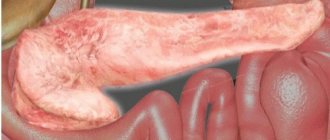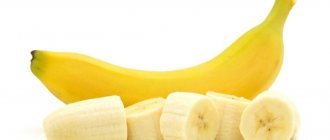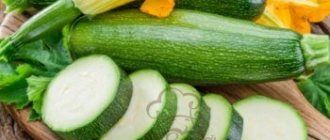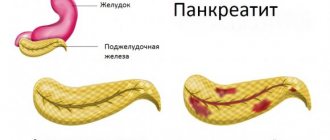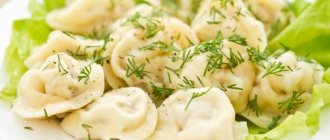People whose pancreatic parenchyma is affected by pancreatitis are advised to select foods for their daily diet as carefully as possible. In the chronic form, stable remission should be achieved. This is the only way to expand the list of permitted products. In case of exacerbation, a strict diet is required. Many patients with inflammation ask doctors whether they can eat shrimp and other seafood for pancreatitis. The gastroenterologist, taking into account the patient’s condition, will explain the benefits and harms of such products.
Boiled product
Basic information
Shrimp are no longer an exotic dish, so the question of whether it is permissible to eat shrimp with pancreatitis becomes very relevant. People suffering from this diagnosis must adhere to a strict diet so as not to worsen the situation.
These crustaceans are considered dietary food: 100 g, depending on the type of shrimp, contains only 94-97 kcal, 18-22 g of protein, 1-2.2 g of fat and is completely free of carbohydrates.
They also contain plenty of useful substances. In addition, they are record holders for copper and iodine content.
Shrimp contains a huge amount of useful vitamins (A, D, E, C, B5, B6, B9. D12), microelements (iron, fluorine, zinc, copper, selenium) and macroelements (calcium, phosphorus, magnesium, sodium, potassium). In other words, this is a vitamin “bomb”. However, even with such a set of useful substances, shrimp is still not considered a medicinal product. It is consumed rather as a dietary supplement.
Like other representatives of its species, shrimp can absorb harmful substances that get into the water. Therefore, when choosing these crustaceans, it is worth paying special attention to the place where they were caught. The size of the shrimp does not affect their valuable qualities in any way. The most useful shrimp is the one that has not been peeled. When cooked, it will remain very juicy and will retain much more nutrients.
Shrimp also have negative properties - high cholesterol levels, as well as the content of large doses of heavy metals, since their habitat is sea and ocean space.
It is important to remember that if the purchased shrimp have black spots and rings on the limbs, then they have spoiled or are old. You can’t eat such seafood, even if your health is fine.
Yellow spots on the legs and segments mean that they tried to remove black spots that indicate poor quality using special solutions, and dry white fragments indicate that the shrimp is frozen.
How to choose seafood for pancreatic diseases?
When choosing seafood, the first thing you need to pay attention to is the fat content. In this regard, it is dangerous to purchase so-called sea cocktails, since they may contain harmful and even dangerous ingredients for patients with pancreatitis and cholecystitis.
When purchasing finished products and semi-finished products (for example, fish cutlets, crab sticks, minced fish), you need to pay close attention to the composition and nutritional value. If the product contains too high a percentage of fat or vegetable protein, it is better to refrain from purchasing. It is also important to pay attention to whether it contains any components prohibited during the diet. Battered and deep-fried shrimp can be dangerous.
It is best to buy fresh frozen fish and cook it yourself. But at the same time, it is important to pay attention to the expiration date of the product and ensure that the packaging is in presentation, and the seafood itself is not covered with yellow spots, which characterize spoiled goods or products in violation of storage conditions. Low-quality products can be detrimental to both the gallbladder and the entire digestive tract.
Beneficial properties and potential harm
In addition to dietary protein, shrimp are rich in many vitamins, amino acids and other beneficial substances. Therefore, this product strengthens the immune system and supports the normal functioning of internal organs. This is facilitated by fat-soluble vitamins A, E, K, D, a record content of iodine (110 mcg per 100 g), potassium, calcium, magnesium, sodium, phosphorus, copper, fluorine, iron, zinc.
The balanced composition of seafood has a beneficial effect on the body of a person suffering from pancreatitis:
- restores damaged pancreatic tissue;
- normalizes the balance of pancreatic enzyme synthesis;
- stimulates the thyroid gland;
- removes excess cholesterol from the body;
- improves metabolism;
- strengthens blood vessels, muscle tissue and bones.
Shrimp meat is a dietary dish, low in calories - only 95 kcal per 100 g of product.
Along with useful elements, shrimp also contain harmful substances and can be dangerous. This:
- salts of heavy metals;
- radioactive substances;
- cholesterol in large quantities.
In addition, the dense texture of crustaceans, due to the chitin contained in the shell, negatively affects the digestion process. Therefore, shrimp are difficult food for the gastrointestinal tract.
Benefits of shrimp
Shrimp are allowed in almost any therapeutic diet, since their meat contains little fat and protein, which is easily absorbed by the body. In addition, the product contains a lot of vitamins, as well as iodine, iron, potassium, magnesium and other trace elements that support the functioning of internal organs and muscles.
You can prepare many healthy and tasty dishes from shrimp. They can be steamed, boiled and baked, which is especially important during a diet. In addition, the calorie content of the shrimp themselves is very low.
Three important rules
In the chronic form of pancreatitis, you can eat boiled, stewed or baked seafood.
During the recovery process, after an attack of illness, the shrimp should be boiled or steamed and chopped.
It is imperative to exclude this seafood from the diet in case of acute pancreatitis.
Pancreatitis requires adherence to a strict diet, especially during exacerbations of the disease. A balanced diet is the basis for maintaining normal pancreatic functions. If there is no individual intolerance to the product, then if consumed correctly, shrimp will come in handy.
Shrimp for chronic pancreatitis
These crustaceans are rich in animal protein, which is indispensable for chronic disease. Their amino acids contain taurine, which activates the tissue healing process. The product helps produce the necessary enzymes and renew pancreatic tissue. Despite the abundance of useful substances, these seafood cannot replace other elements that our body needs. We must remember that it is better to stick to the golden mean in everything.
To restore pancreatic tissue, you need a large amount of light and high-quality protein. However, shrimp can also be added to the main diet during the period of remission. The maximum amount is 350 grams of product per day.
You can cook shrimp almost any way you like. However, fried foods should be avoided. The best option here would be pureed shrimp, boiled, stewed, or as a soup base or an addition to a vegetable or cereal side dish.
Video on the topic:
How to cook?
There is no need to chop the shrimp too much; just boil or bake them. You can add these seafood to all kinds of salads, soups, or use them as a side dish. These crustaceans are a low-calorie dietary product. Depending on the variety, there are 87-95 kcal per 100 g of crustacean. However, the permitted daily dose of the product, which is not recommended to be exceeded for pancreatitis, is 350 g.
For acute pancreatitis
In acute cases and exacerbations of the disease, it is necessary to consume foods that will not overstimulate the production of gastric and pancreatic secretions. The seafood delicacy is on the list of prohibited foods during this period. Its meat is quite dense, which will cause unnecessary stress on the digestive system. Only after the attack has stopped and the symptoms of acute pancreatitis have been completely eliminated can shrimp be gradually introduced into the diet in small doses. Moreover, it must be steamed or boiled and crushed.
Is it possible to eat shrimp if there are inflammatory processes in the internal organs? Shrimp meat is well absorbed by a healthy body, however, during periods of exacerbation of inflammation of the pancreas, it is better to avoid them, since the internal organs in this case will work to the limit, which can cause a deterioration in the patient’s condition. As soon as the main symptoms of an exacerbation can be stopped and a lasting result from treatment can be obtained, they can begin to be administered in small portions.
In case of a disease such as pancreatitis during the recovery period, shrimp can help in treating the disease. This is due to the following properties of the product:
- Meat protein, which has high nutritional value, has a beneficial effect on the condition of the pancreas.
- The product can significantly improve the nutritional value during a diet.
- Omega-3 fatty acids and astaxanthin can reduce inflammation.
- You can achieve the greatest safety and quality of the product if you boil or stew the shrimp. It is also useful to add pureed meat to porridge and vegetable dishes.
Recommendations for use
Despite its high nutritional value and beneficial effect on the functioning of the pancreas, shrimp meat must be consumed following certain rules.
In acute form
In the acute stage of pancreatitis (or during exacerbation of the chronic stage), inflammation of the pancreas occurs. Therefore, it is better to avoid eating shrimp during this period. This can lead to a worsening of the patient’s condition, since seafood during acute attacks of pancreatitis puts a large burden on the digestive system.
As symptoms improve (about 1 month after the attack), shrimp meat can be introduced into the diet gradually, starting with small portions.
In this case, the meat must be boiled, steamed, chopped and added to other dishes (cereals, vegetables, herbs).
During remission of chronic
With persistent remission of chronic pancreatitis, crustaceans can be consumed in quantities of no more than 350 g per day.
During this period, protein is necessary for the weakened pancreas to recover from attacks of exacerbation of pancreatitis.
They need to be prepared by boiling, baking, stewing. You should not eat smoked, fried or pickled shrimp.
During remission, shrimp meat does not need to be chopped. It is recommended to add it to soups, salads, side dishes, and omelettes.
When purchasing seafood, you need to pay attention to the quality of the shrimp and their freshness. They should be clean, without black or yellow spots.
PRAWN BENEFITS | are shrimp good for health, shrimp cholesterol,Vegetable cream soup with shrimp [Bon Appetit Recipes]Shrimp salad with quail eggs
Shrimp during long-term remission
During a persistent decrease in the symptoms of the disease and the absence of acute moments, the shrimp do not have to be chopped - it is enough to boil, stew or bake well, or include them in salads, side dishes and soups.
If the functioning of the pancreas is confidently stable, and the patient himself tolerates seafood well, then you can eat no more than 300 g of shrimp meat. The protein present in it has a beneficial effect on the synthesis of enzymes and speeds up the rehabilitation period.
Patients with chronic pancreatitis also need to carefully adhere to the rules for their use:
- Use only high-quality products for food: there should be no yellow or black spots or rings on the limbs of the shrimp, which indicates freshness. Yellow areas are evidence that they tried to remove black spots using special substances. In addition, the presence of white fragments is a sign that the shrimp is severely frozen.
- Seafood from the category of smoked meats, pickles, and canned foods are strictly unacceptable for pancreatitis of the pancreas.
- When preparing seafood, you should not use sour and spicy dressings, sauces using vinegar and citric acid.
- It is forbidden to eat rolls and sushi with shrimp.
- A serving of crustaceans should not exceed 350 g.
- In the absence of clinical signs of the disease for a long time, it is allowed to eat shrimp in their natural form (without rubbing). It is recommended to give preference to cooking methods such as steaming, baking or stewing.
Meat and fish
First of all, you need to give up smoked and fatty foods, including rich meat, fish and mushroom broths, since digesting them requires additional effort. Therefore, sick people should not eat pig, goose and duck meat. In addition, patients of gastroenterologists are prohibited from:
- Kebabs,
- Cutlets,
- Aspic,
- All types of sausages and sausages,
- Stew, etc.
Moreover, with an exacerbation of pancreatitis, patients are forced to forget about all offal and red meat, and instead eat dietary chicken, turkey or rabbit meat. In this case, when preparing food you will have to limit yourself to a small amount of salt as a seasoning, since all other spices and sauces are prohibited for patients. Fatty fish should also not be on patients' tables, for example:
- sturgeon,
- salmon,
- salmon,
- trout,
- herring,
- mackerel,
- catfish,
- sprat.
In addition, it is worth leaving salted fish, caviar and canned fish until better times.
Nuances of preparing the product
How should you cook shrimp for pancreatitis? It was already mentioned above that the technology for preparing shrimp depends on the clinical presentation of pancreatitis. Experts point out that you don’t need to thoroughly chop the shrimp, boiling or baking is enough, and it doesn’t have to be served in its pure form - you can use them to prepare a variety of dietary salads, first courses and side dishes. By the way, 100 g of shrimp meat contains only 95 calories.
Preparing this delicacy is not particularly difficult, the main thing is to follow the peculiarities of dietary technology. As for main courses, seafood goes well with many vegetables:
- Potato.
- Zucchini.
- Carrot.
- Broccoli.
- Cauliflower.
Frozen shrimp are washed under running water to remove excess ice and dirt. Next, they are dipped in boiling salted or lightly seasoned water (the volume of liquid is 2 times the volume of seafood) and boiled until tender. Cooking time depends on the size of the shrimp - the larger they are, the longer it will take to cook, but not less than 3-5 minutes. Cooked shrimp usually float to the surface, their meat acquires a delicate color, and the shell becomes slightly transparent.
Is it possible to eat shrimp if you have pancreatitis? Shrimp is a good source of protein, but it needs to be cooked properly. Their meat has a fairly dense structure; it may be difficult for the stomach to digest it. Therefore, shrimp for pancreatitis must be boiled until fully cooked. You should absolutely not fry them or fry them in batter.
You can easily prepare many different dishes: puree soup from potatoes, zucchini and carrots with the addition of shrimp, salad with shrimp and chicken egg whites. If you top it with low-fat, sugar-free yogurt, it will be an excellent protein dish.
Recipes for dishes with shrimp for pancreatitis
Baked soufflé
Combine 300 g of boiled chopped shrimp with 200 ml of low-fat milk and 1 egg. Add salt. Mix all ingredients thoroughly. Grease the mold with vegetable oil and pour the mixture into it. Bake for 25 minutes at +180ºС.
Shrimp soup
A gentle dietary soup with shrimp will help not only expand the menu of a patient with pancreatic insufficiency, but also reinforce a weakened body with the necessary nutrients.
Ingredients:
- Potatoes – 2-3 pcs.
- Shrimp – 300 g
- Milk – 300 ml.
- Zucchini – 150 g.
- Water – 200 ml.
- Salt – a pinch.
Peel the zucchini and potatoes and chop them on a coarse grater.
Prepare the shrimp, depending on their type, so boil the unpeeled frozen ones with boiling water for 2 minutes, cool and peel. Wash the crustaceans and pass through a meat grinder, or grind with a blender.
Pour water and milk into a saucepan and bring to a boil. Add vegetables to the boiling liquid and simmer for 15 minutes. When the vegetables are ready, add a drop of salt, shrimp and simmer for another 5 minutes.
Serve the finished dish with crackers and herbs.
Salad with shrimp
Diet salad with shrimp has a pleasant taste and is a great way to diversify the daily diet of a sick person.
Ingredients:
- Shrimp – 250 g
- Quail eggs – 8 pcs.
- Adyghe cheese – 100 g
- Fresh cucumber – 1 pc.
- Sour cream – 2 tbsp.
Pour boiling water over the shrimp and boil for 5-10 minutes, depending on their size. Boil eggs, cut into small cubes. Grate the cheese on a coarse grater. Peel the cucumber and remove the stems and grate it on a grater with large holes.
Combine all products, season with low-fat sour cream or natural yoghurt, mix. Sprinkle with fresh herbs before serving.
Salad with seafood and vegetables
This wonderful salad has a delicate taste and is perfect for the diet table for people with an inflamed pancreas.
Ingredients:
- Shrimp – 300 g
- Carrots – 1 pc.
- Potatoes – 3 pcs.
- Egg – 2 pcs.
- Sour cream – 2 tbsp.
Boil the shrimp for about 10 minutes, peel and cut into cubes. Boil carrots until soft, cut into cubes. Boil the potatoes, cut into small pieces. Finely chop the boiled eggs.
Combine all ingredients, add sour cream and mix.
